Background – Industrial Heritage
In the process of rapid urban development, the use of architecture as heritage has attracted widespread attention because of its cultural, historical, artistic and other values. Industrial heritage, a typological subset, should not be ignored. Especially for some traditional industrial cities, the transformation, rapid development and expansion of the city have caused factories to close or shift, one after another, leaving empty shells behind, and occupying a large portion of the city’s land resources. Yet, they remain an important part of the city’s memory. Therefore, they should be transformed and reused to suit modern urban construction and meet people’s needs.
Introduction – Wuhan Iron Works
So I took Hanyang Iron Works in Wuhan City, Hubei Province, China as the research object. Wuhan is a traditional industrial city in China. Due to rapid urban development, the factory was gradually abandoned and is now looking for a chance to transform and be integrated back into the city. So I tried to think about how to help the factory to become more suitable for current social behaviors while retaining its own characteristics as much as possible. With Wuhan being named as the “City of Design”, with “New Life in the Old City” being the theme, it’s a chance for the city to change in this direction, intervening to improve urban relations within the city fabric. Hanyang Iron Works, with its tight ties with the industrial design in the city’s history, hence takes on an important role.
Renewal – Back To The City
I extended the area more, connecting it with the outside world, so as to make the factory compound a part of the urban public space, rather than some mysterious, lost space. By design, the whole site is divided into five zones, meeting different demands at the cultural, community and city level. With the placement of different programmes, the Iron Works can then reintegrate back into the city fabric, and return to being a vital component of city life.
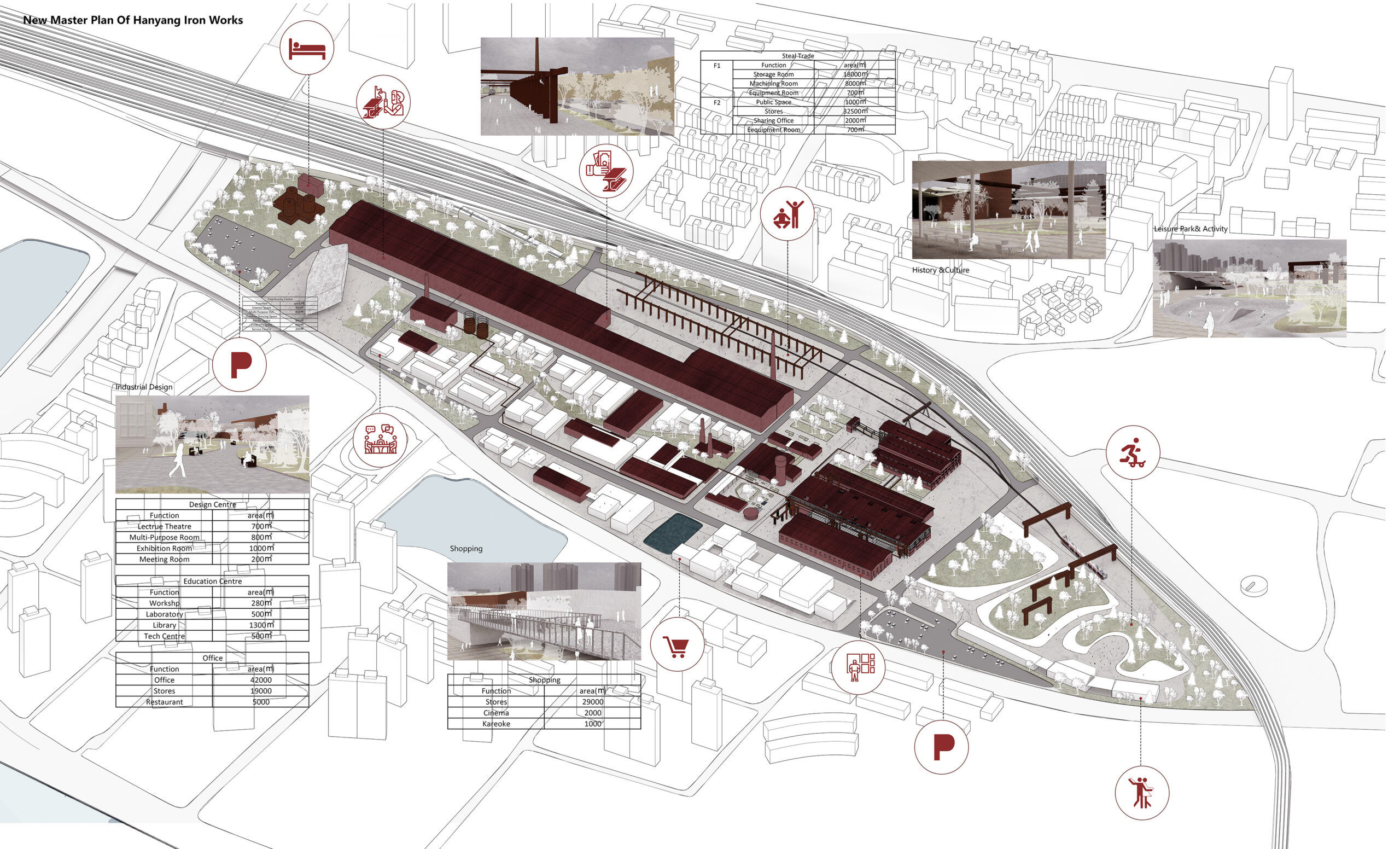
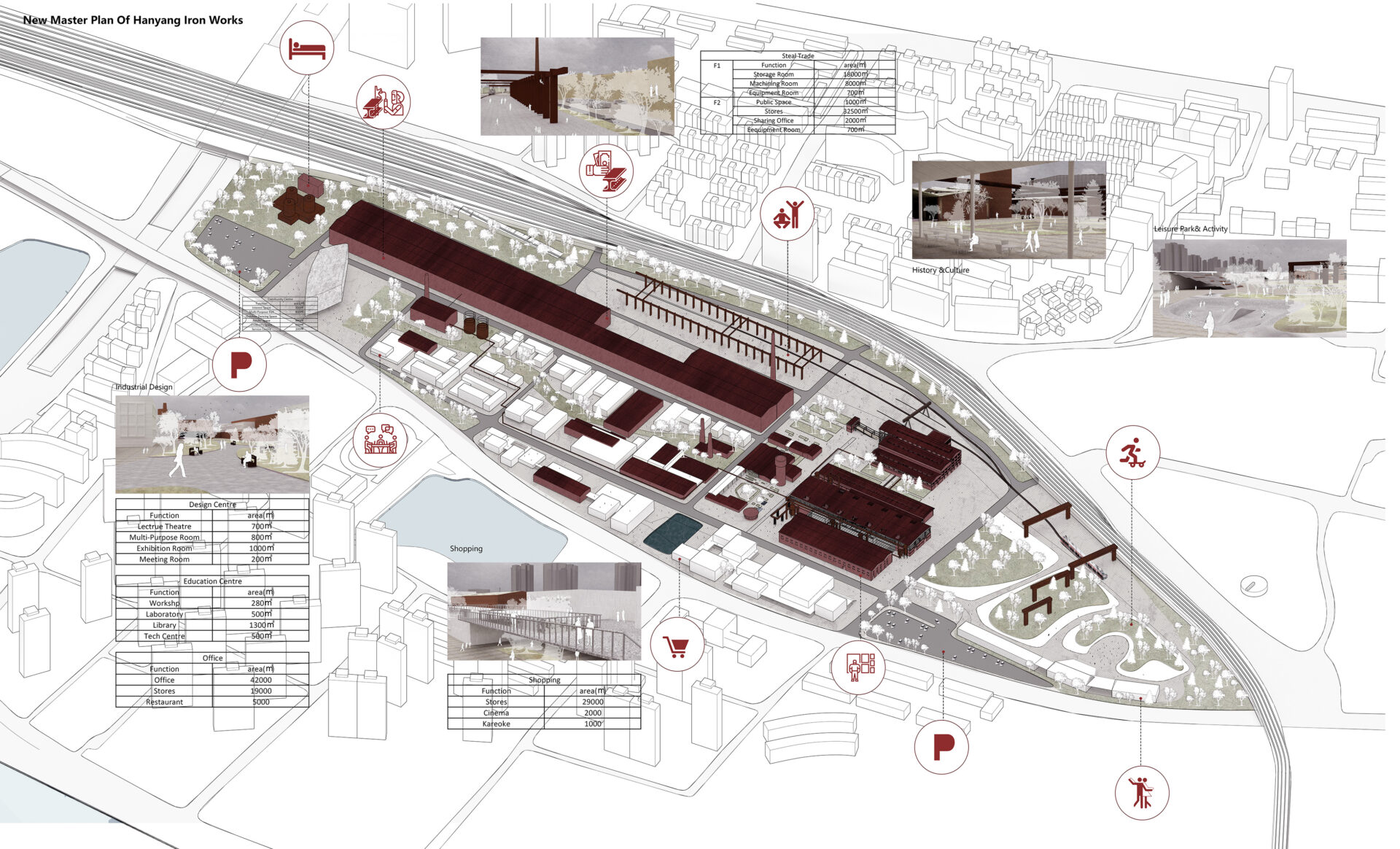
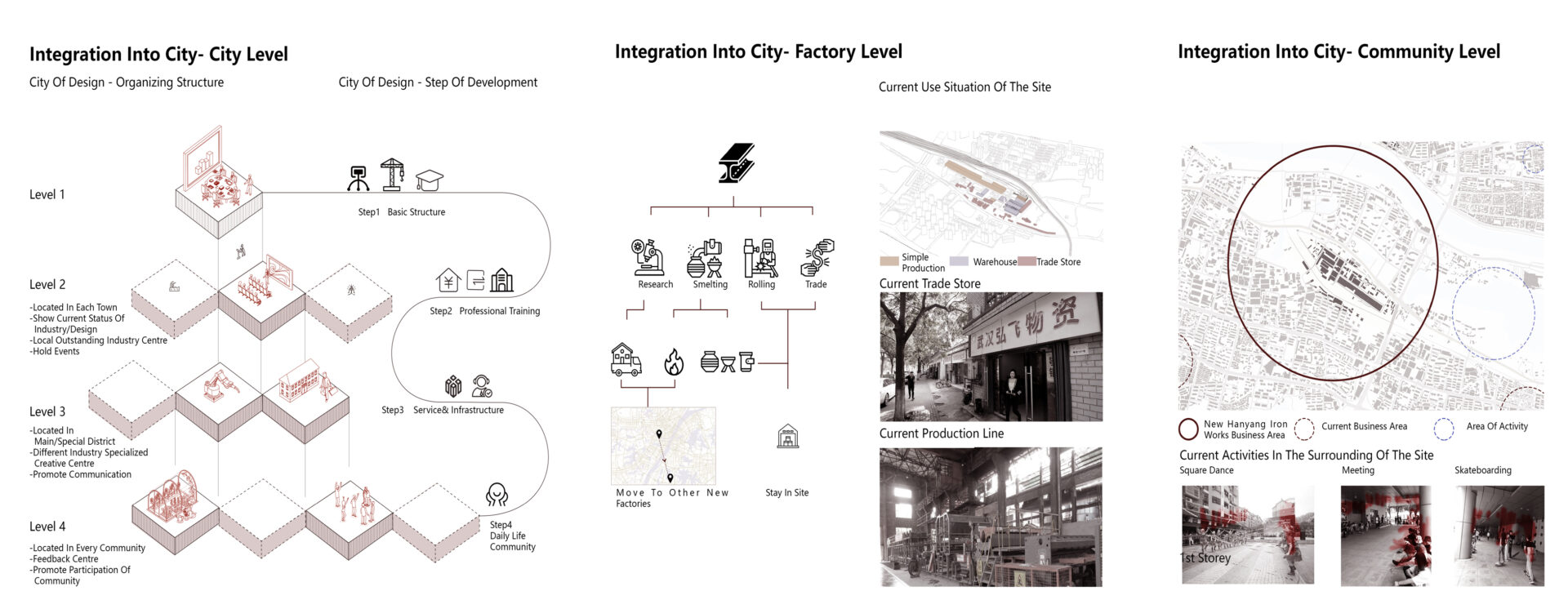

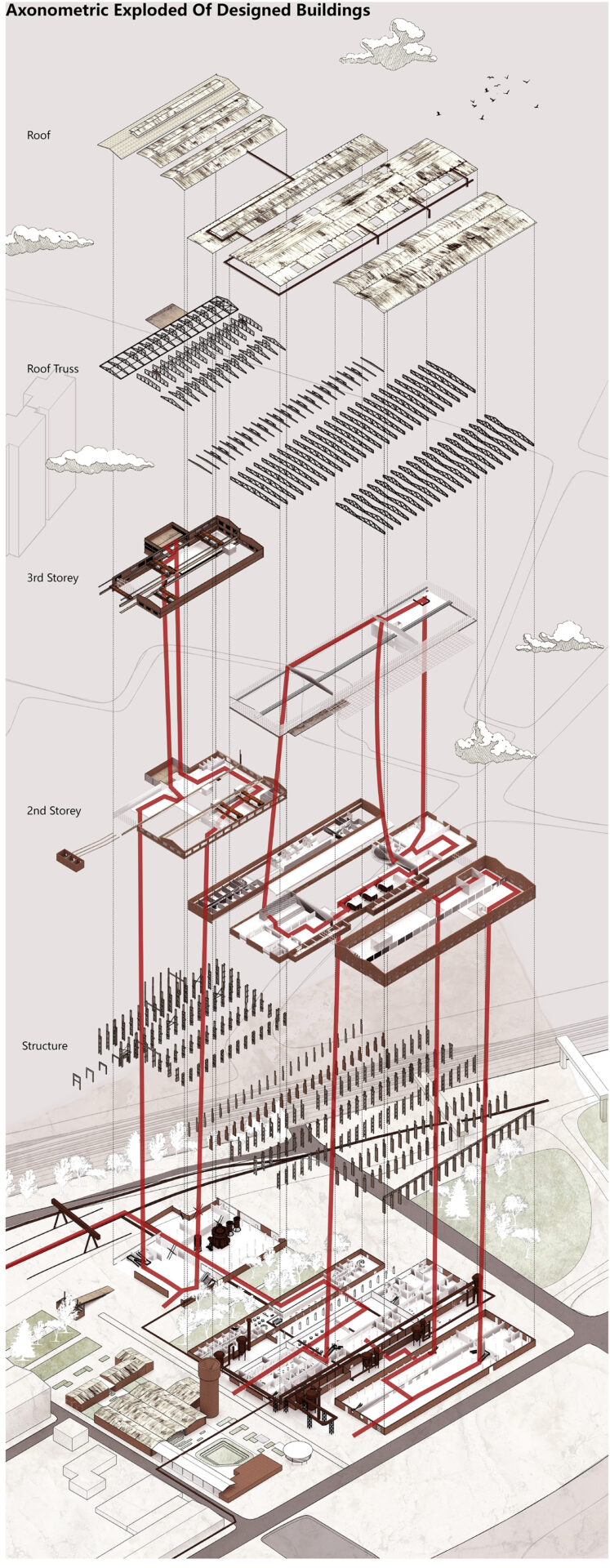
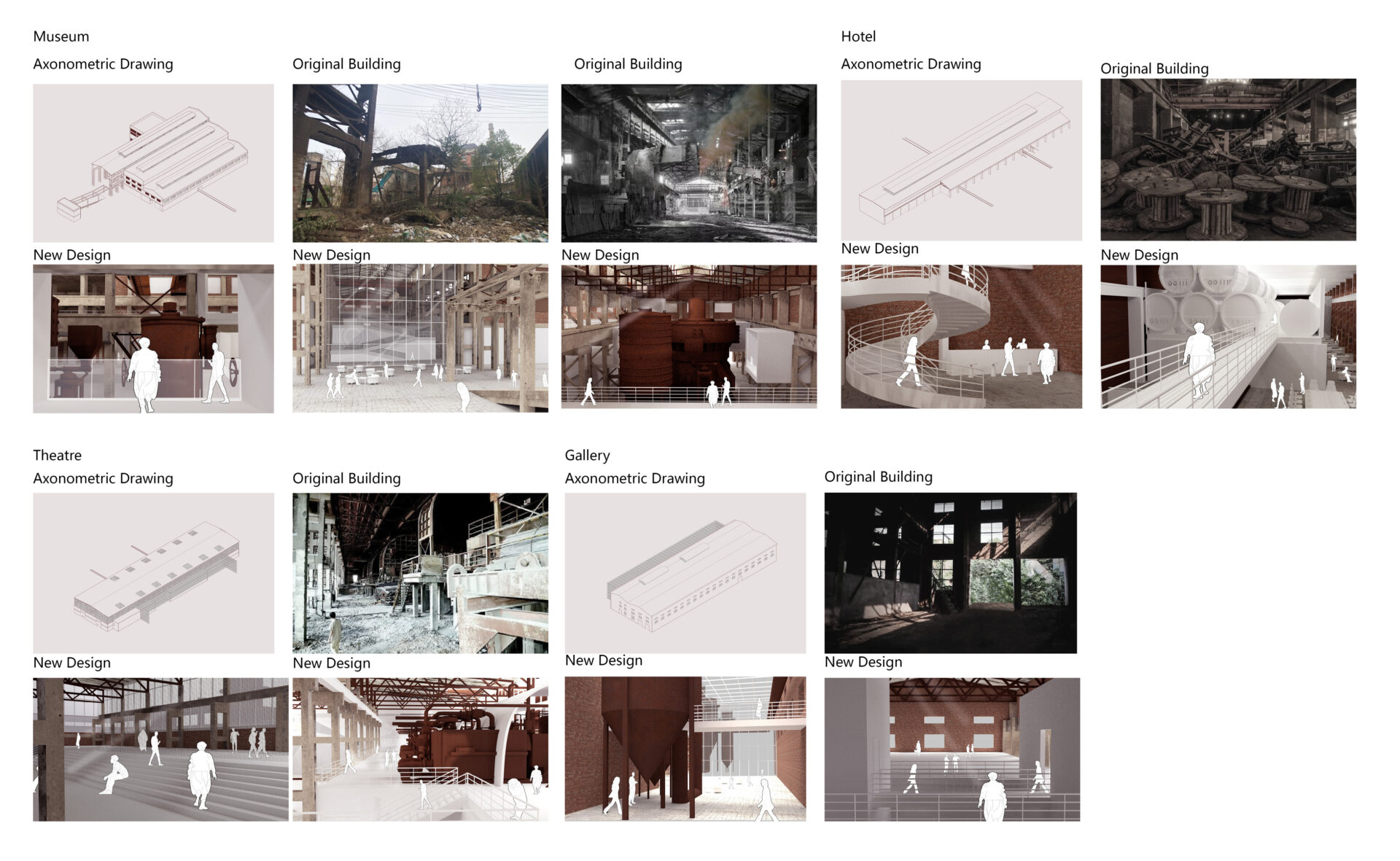
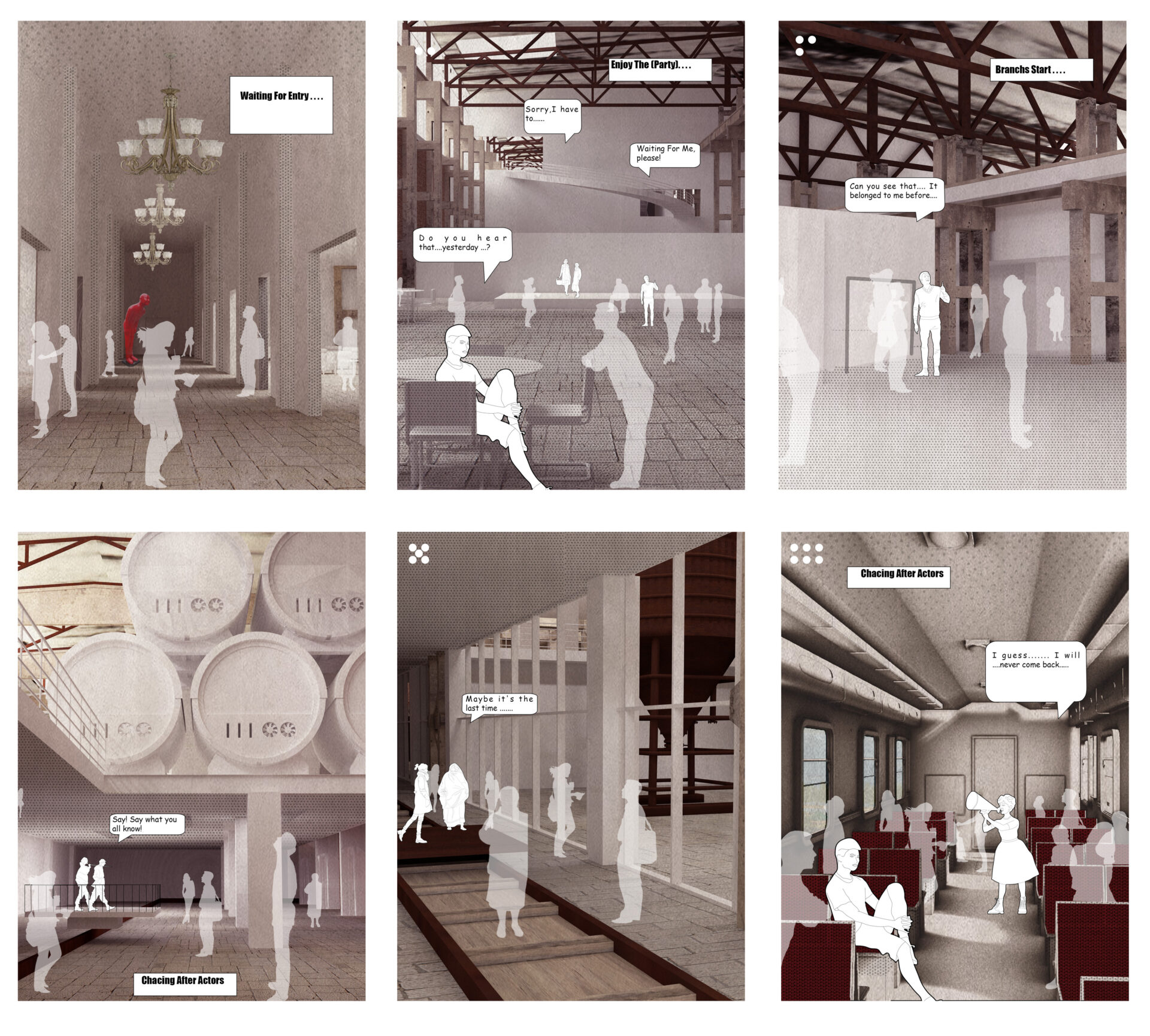
Supervisor's comments:
The demolition and redevelopment of the industrial sites are potentially damaging the environment and creating huge carbon footprint issue due to the embedded carbon content of the steel and concrete structures. Therefore, adaptive reuse is considered a good strategy for sustainable development. Xueying’s proposal intends to propel Wuhan as part of the UNESCO Creative Cities Network by reusing the former factory as relics of modern industrial heritage for contemporary arts and cultural functions, with minimal intervention and maximum retention strategy. It may set the direction to convert the larger site into a public park for public wellness rather than redevelopment into private commercial usages.
- Assoc. Prof. Johannes Widodo (Dr.)